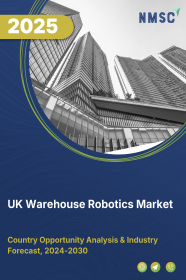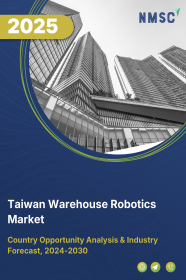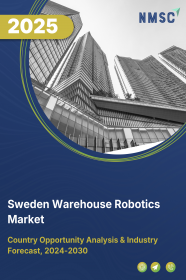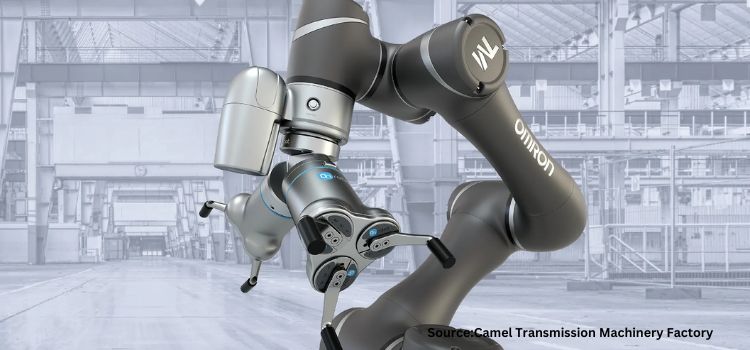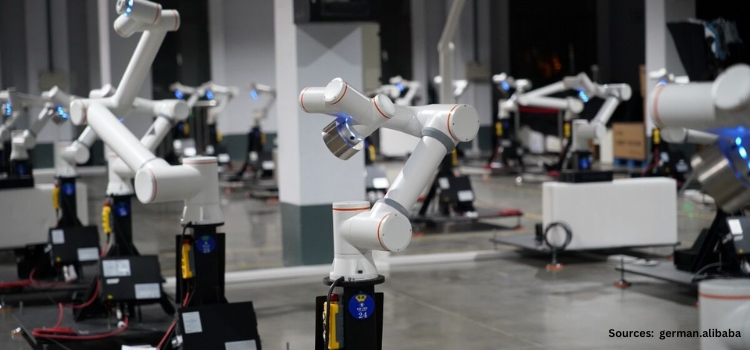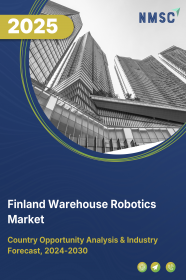
Finland Warehouse Robotics Market by Type (Automated Guided Vehicles (AGVs), Autonomous Mobile Robots (AMRs), Articulated Robots, & Others), by Offering (Hardware, Software, and Services), by Payload Capacity (Less than 100 KG, 101-200 KG, 201-500 KG, and Others), by Application (Palletizing and Depalletizing, Sorting and Packaging, Picking and Placing, Transportation), and by End-User (E-commerce, Automotive, Food & Beverages, and Others) – Opportunity Analysis and Industry Forecast, 2025–2030
Industry: Semiconductor & Electronics | Publish Date: 29-Mar-2025 | No of Pages: 130 | No. of Tables: 96 | No. of Figures: 53 | Format: PDF | Report Code : SE3143
Finland Warehouse Robotics Market Overview
The Finland Warehouse Robotics Market is valued at USD 29.1 million in 2024, and is projected to hit USD 59.4 million by 2030, with a CAGR of 9.9 %. In terms of volume, the market size was 0.90 thousand units in 2024 and is projected to reach 1.79 thousand units by 2030, with a CAGR of 10.9% from 2025 to 2030.
Finland's development of the chemical industry contributes to the growth of the warehouse robotics market. Chemical companies handle large volumes of raw materials, hazardous goods, and complex inventory systems, requiring precise, fast, and safe handling.
Additionally, the rising adoption of electric vehicles (EVs) is driving market growth. The increasing demand for efficient manufacturing, assembly, and logistics operations in the automotive sector further boosts the need for warehouse robotics.
However, shortage of labour in Finland, mainly skilled personnel required to operate and maintain advanced warehouse robotics, restrains market growth.
Expansion of The Chemical Industry fuels to the Growth of Warehouse Robotics
Finland’s development of the chemical industry donates to the development of warehouse robotics as chemical companies deal with a high volume of raw materials, hazardous goods, and intricate inventory systems, which needs exact, fast, and safe treatment.
The AGVs and robotic arms are gradually deployed to streamline tasks like material handling, sorting and packaging, reducing human labour and minimizing risk associated with management of hazardous chemicals. Thus, with the acceptance of robots the industry faces development in efficiency as well as ensures better agreement with safety and regulatory standards in the chemical sector.
As per the latest report of Cefic, the chemical industry is Finland’s second largest export sector with USD 18.18 billion exports in 2022 and generated a revenue of USD 37.39 billion in 2022. The chemical industry of Finland plans to achieve carbon neutrality and a net positive impact on nature by the year 2045.
Rise In Adoption Electric Vehicles (EVs) Drives for Warehouse Robotics Market
With the increasing acceptance of electric vehicles (EVs) is driving the growth of warehouse robotics by growing the demand for well-organized manufacturing, assembly, and logistics operations in the automotive sector.
As the EV production increases, warehouses are assigned with managing more complex and high-volume inventory that increases merging of robots to enhance efficiency by handling large, heavy components.
The International Energy Agency in 2024 states that Finland EV sale increased from 31,000 in 2022 to 48,000 in 2023, marking a notable growth of 54.8% over one-year duration. This rise in amount is expected to increase the adoption of robots in warehouses further enhancing operations in the automotive industry.
Shortage of Skilled Workforce Restrains the Finland Warehouse Robotics Market Expansion
With the shortage of skilled workers in the Finland to work and keep robotic systems is a key factor restraining the growth of the warehouse robotics market. An absence of professional expertise in robotics programming, maintenance, and troubleshooting hinders the efficient utilization and optimization of robotic systems, slowing down market adoption and expansion.
As markets increasingly rely on automation for efficiency, the incapability to find capable workers to manage these complex systems results in underutilized technology and costly operational delays. Also, the gap in training and education programs for evolving robotic technologies limits the workforce's capability to meet industry demands, further restraining growth forecasts in the market.
Introduction of Artificial Intelligence Creates Future Option for the Market
The addition of artificial intelligence in supply chain robotics is expected to play a major role allowing growth opportunity for the Finland warehouse robotics market trends in the future. AI induced solutions improves decision making, optimize inventory management and improve the accuracy and speed of operations that helps warehouses to become more accurate and adaptable.
As such in January 2025, Nvidia disclosed new AI development tools aimed at improving the potential of autonomous robots and vehicles. These models are mad to create synthetic data and simulate physical interactions, allowing developers to create designed templates for testing their AI systems before real-world. These progresses will focus on the transformative potential of AI in warehouse robotics, paving the way for smarter, more lively and highly efficient warehouse operations that meet the future demands of modern supply chains.
Competitive Landscape
The promising players operating in the Finland warehouse robotics industry includes ABB Ltd., Omron Corporation, KUKA AG, Fanuc Corporation, Zebra Technologies, Dematic, Honeywell International Inc, YASKAWA ELECTRIC CORPORATION, Amazon Robotics LLC, SSI Schaefer, Toyota Material Handling Group, K. Hartwall and others.
Finland Warehouse Robotics Market Key Segments
By Type
-
AGVs
-
AMRs
-
Articulated Robots
-
Others
By Offering
-
Hardware
-
Software
-
Services
By Payload capacity
-
Less than 100 kg
-
101-200 KG
-
201-500 KG
-
Others
By Application
-
Palletizing and Depalletizing
-
Sorting and Packaging
-
Picking and Placing
-
Transportation
By End User
-
E-commerce
-
Automotive
-
Food & Beverages
-
Others
Key Players
-
ABB Ltd.
-
Omron Corporation
-
KUKA AG
-
Fanuc Corporation
-
Zebra Technologies
-
Dematic
-
Honeywell International Inc
-
YASKAWA ELECTRIC CORPORATION
-
Amazon Robotics LLC
-
SSI Schaefer
-
Toyota Material Handling Group
-
K. Hartwall
REPORT SCOPE AND SEGMENTATION:
|
Parameters |
Details |
|
Market Size Value in 2024 |
USD 29.1 million |
|
Revenue Forecast in 2030 |
USD 59.4 million |
|
Value Growth Rate |
CAGR of 9.9% from 2025 to 2030 |
|
Market Volume in 2024 |
0.90 thousand units |
|
Unit Forecast in 2030 |
1.79 thousand units |
|
Volume Growth Rate |
CAGR of 10.9% from 2025 to 2030 |
|
Analysis Period |
2024–2030 |
|
Base Year Considered |
2024 |
|
Forecast Period |
2025–2030 |
|
Market Size Estimation |
Million (USD) |
|
Market Volume Estimation |
Thousand units |
|
Growth Factors |
|
|
Companies Profiled |
12 |
|
Countries Covered |
10 |
|
Customization Scope |
Free customization (equivalent up to 80 working hours of analysts) after purchase. Addition or alteration to country, regional, and segment scope. |
|
Pricing and Purchase Options |
Avail customized purchase options to meet your exact research needs. |








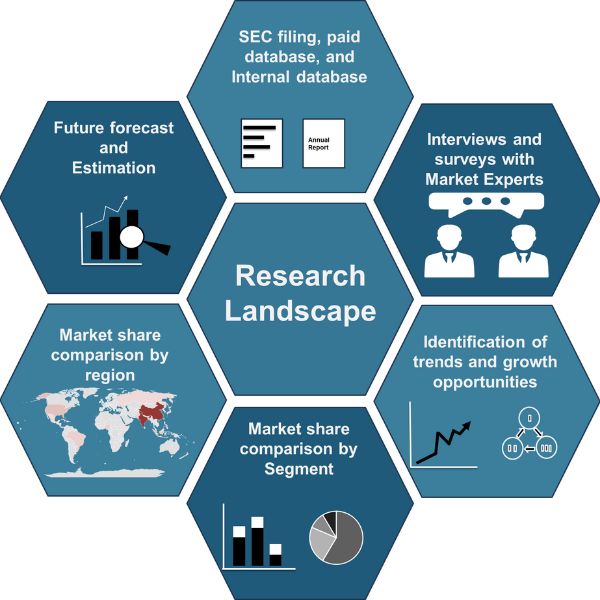





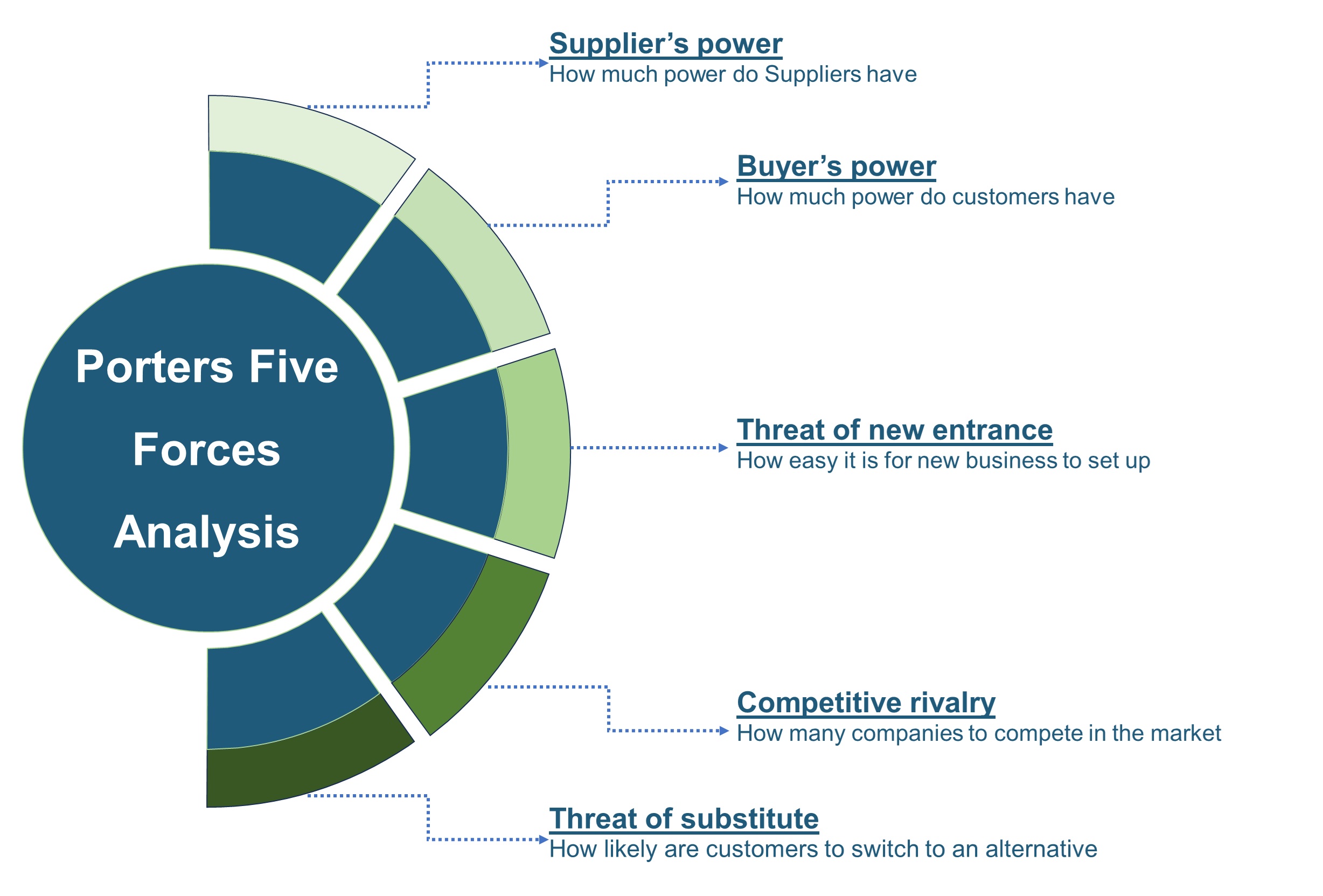

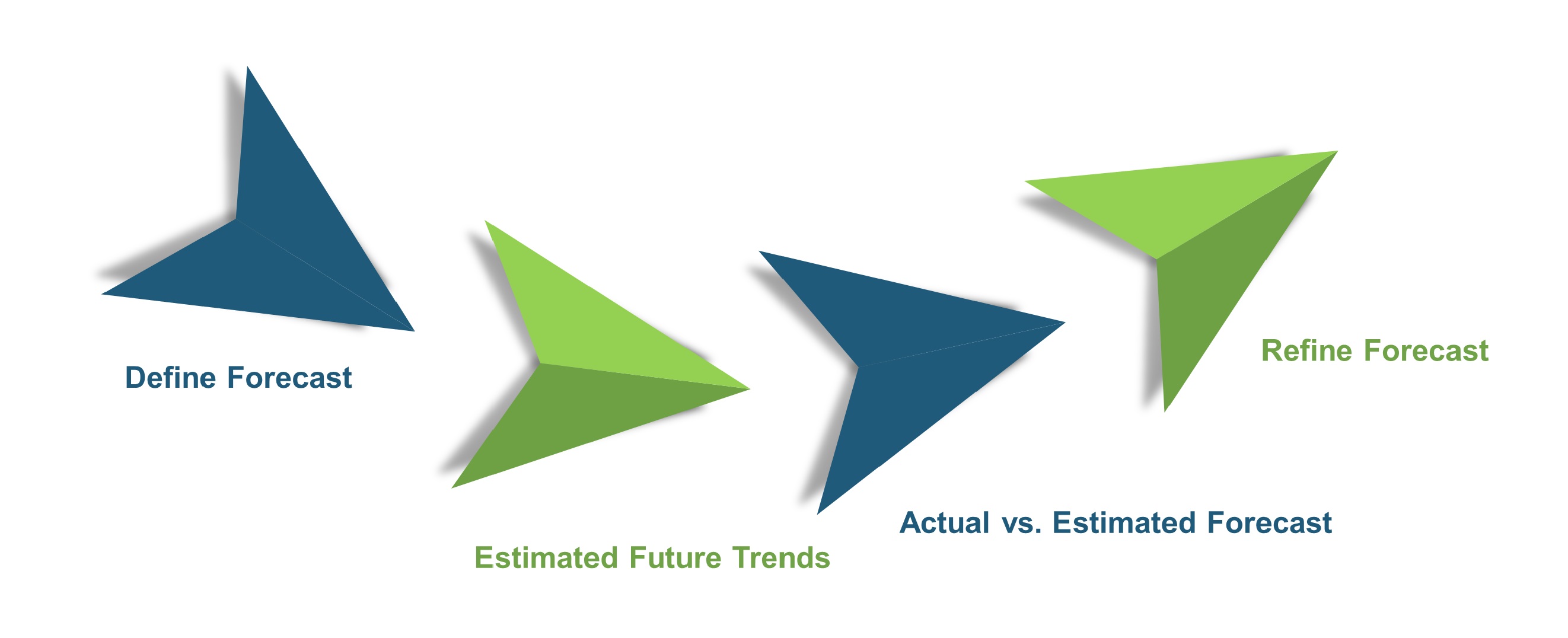
 Speak to Our Analyst
Speak to Our Analyst



